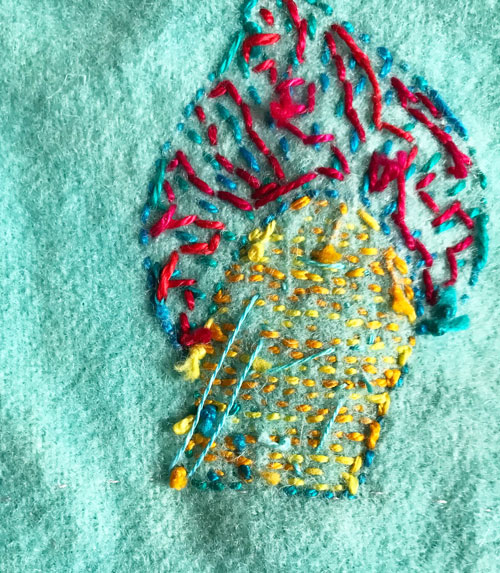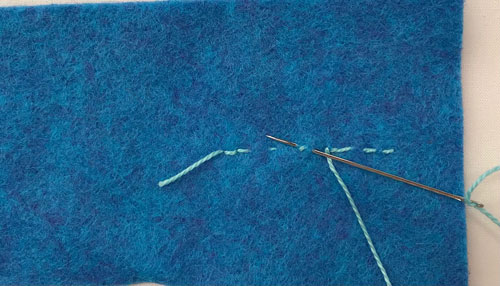
One of the mysteries of travel is how to pack a suitcase. For me, there are three big concerns: weight, keeping things dry, and packing so nothing breaks while en route. My lightweight cloth suitcase with wheels is my go-to companion on trips. And having seen my luggage sitting on the tarmac in a heavy rainstorm, I know that everything in my suitcase must be in a plastic bag.
And then there is breakage. In the past my hand-dyed threads were displayed in plastic trays at a venue. And often I returned with the plastic trays cracked or broken by the airline baggage system. But finally I came up with a soft, lightweight, non-breakable solution- fabric trays.
How to Make a Quick Fabric Tray

- Choose an old quilt that is hankering for a new life. The quilts I’m using measure about 20 inches by 20 inches.
- Fold the quilt with the right sides together at each corner. Stitch across the folded quilt at about 3 inches from where the sides meet to the fold.
- You may want to use the walking foot on your machine.

- Roll the corner flaps back to reveal the pretty quilt interior.

- Fill the fabric trays with beautiful hand-dyed threads.
- Enjoy your flight!






